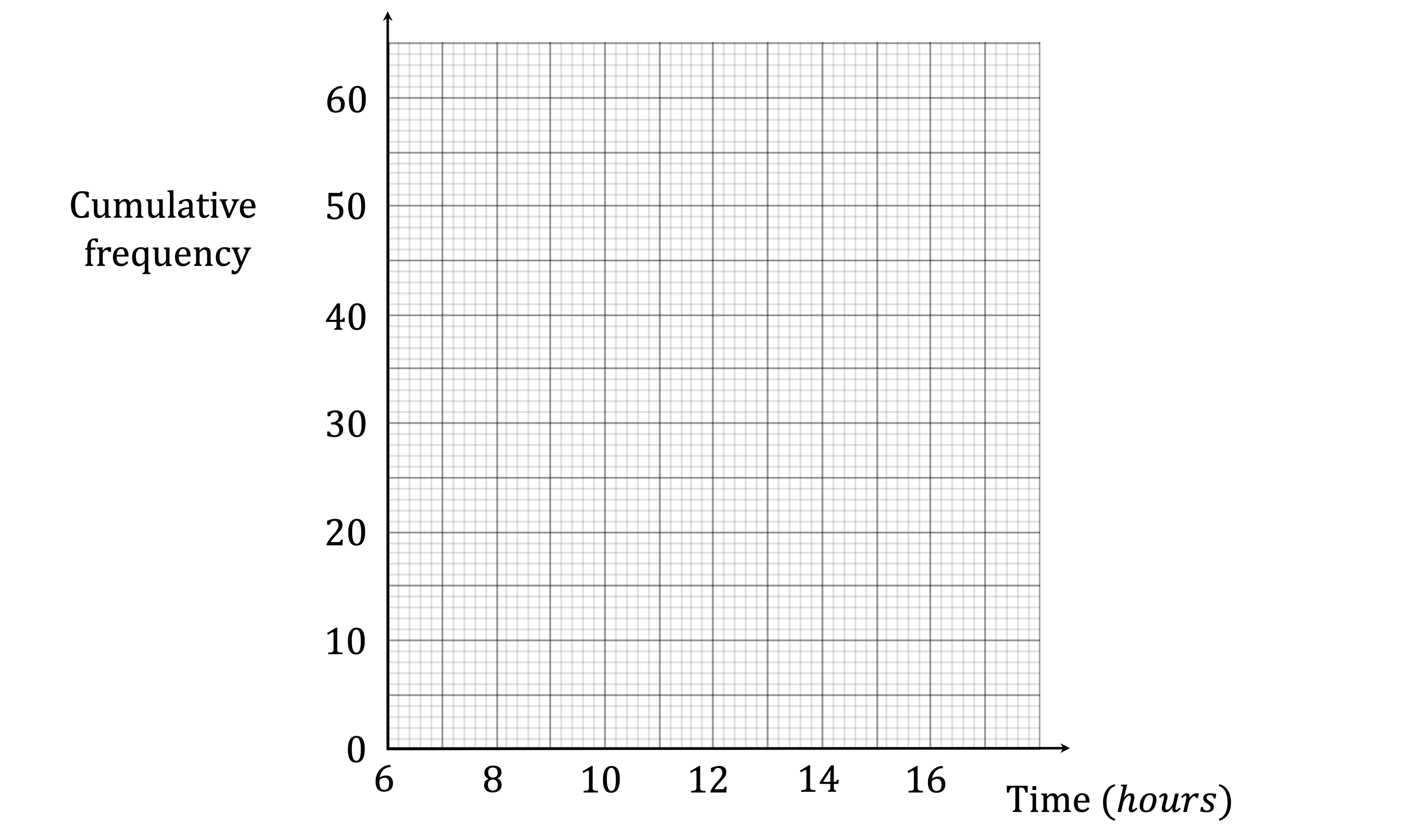Sue works for a company that delivers parcels.
One day the company delivered parcels.
The table shows information about the weights, in kg, of these parcels.
Weight ( | Frequency |
Complete the cumulative frequency table.
Weight ( | Cumulative frequency |
| |
| |
| |
| |
| |
|
On the grid opposite, draw a cumulative frequency graph for your table.

Sue says,
" % of the parcels weigh less than
kg."
Is Sue correct?
You must show how you get your answer.
Did this page help you?











